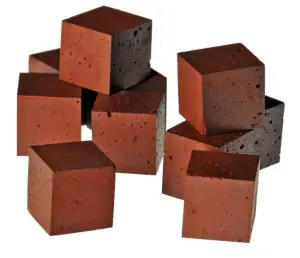This article contains comparison of key thermal and atomic properties of phosphorus and calcium, two comparable chemical elements from the periodic table. It also contains basic descriptions and applications of both elements. Phosphorus vs Calcium.

Phosphorus and Calcium – About Elements


Source: www.luciteria.com
Phosphorus and Calcium – Applications
Phosphorus
Phosphorus is an essential plant nutrient (the most often limiting nutrient, after nitrogen), and the bulk of all phosphorus production is in concentrated phosphoric acids for agriculture fertilisers, containing as much as 70% to 75% P2O5. The vast majority of phosphorus compounds mined are consumed as fertilisers. Phosphate is needed to replace the phosphorus that plants remove from the soil, and its annual demand is rising nearly twice as fast as the growth of the human population. Other applications include organophosphorus compounds in detergents, pesticides, and nerve agents.
Calcium
The largest use of metallic calcium is in steelmaking, due to its strong chemical affinity for oxygen and sulfur. Its oxides and sulfides, once formed, give liquid lime aluminate and sulfide inclusions in steel which float out. Calcium compounds are used as manufacture of insecticides, paints, blackboard chalk, textile and fireworks.
Phosphorus and Calcium – Comparison in Table
| Element | Phosphorus | Calcium |
| Density | 1.823 g/cm3 | 1.55 g/cm3 |
| Ultimate Tensile Strength | N/A | 110 MPa |
| Yield Strength | N/A | N/A |
| Young’s Modulus of Elasticity | N/A | 20 GPa |
| Mohs Scale | 0.5 | 1.5 |
| Brinell Hardness | N/A | 170 – 400 MPa |
| Vickers Hardness | N/A | N/A |
| Melting Point | 44.1 °C | 842 °C |
| Boiling Point | 280 °C | 1484 °C |
| Thermal Conductivity | 0.235 W/mK | 200 W/mK |
| Thermal Expansion Coefficient | N/A | 22.3 µm/mK |
| Specific Heat | 0.77 J/g K | 0.63 J/g K |
| Heat of Fusion | 0.657 kJ/mol | 8.54 kJ/mol |
| Heat of Vaporization | 51.9 kJ/mol | 153.3 kJ/mol |












